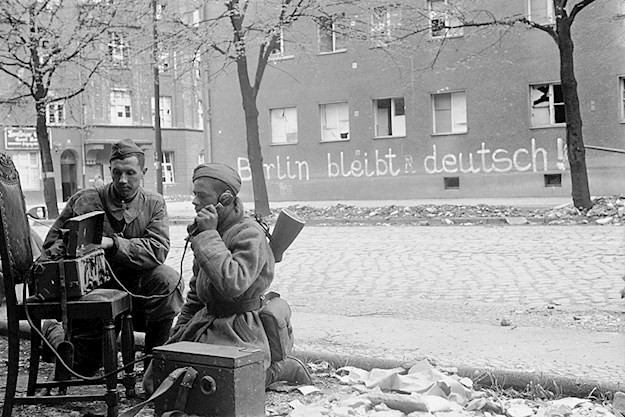The final major offensive in the European Theatre of the Second World War
On 22 June 1944, two weeks after the Allied landings in Normandy, the Soviet army initiated its campaign against the German forces. On 16 October Soviet troops crossed the German border. Joseph Stalin, the head of State of the Soviet Union, was in a hurry to get to Berlin before the Americans. He wanted above all to demonstrate Soviet military might and achieve a favourable post-war negotiating position. However, U.S. President Franklin Roosevelt was not interested in conquering Berlin. He wanted the Soviet Union as an ally in the war against Japan, and above all as a partner in the creation of a stable post-war world order.
On 16 April 1945, the Soviet forces started the final offensive against the German capital. They tried to encircle Berlin in a pincer movement. But the attempted fast breakthrough into Berlin did not materialize. Instead it took them four days and many casualties to get past the Seelow Heights, situated about 70 km east of Berlin.
On 21 April, the first Soviet units finally entered Berlin. In house-to-house fighting the Soviet soldiers faced desperate German resistance. The Western Allies stopped their air attacks on 16 April 1945. The Soviet Union continued the air war to support the ground offensive in Berlin.
On 2 May 1945, the Berlin garrison surrendered to the Soviet army. The human cost of the battle of Berlin had been enormous. The Soviets counted over 80.000 dead. German losses are estimated at almost 50.000.
